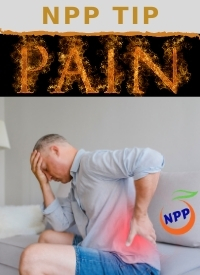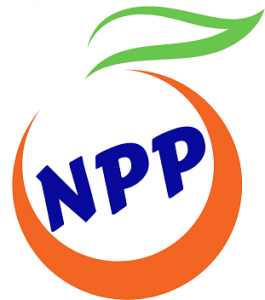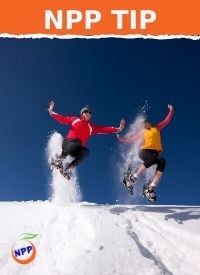Scroll down to listen to the audio!

Do you suffer from debilitating pain? Pain can sometimes be a gift, a message sent from the Central Nervous System to the Brain. It is the body’s way of letting us know that something is wrong, of protecting us from continuing to injure ourselves, making things worse, and, sometimes, telling us that it is time to see a health care professional. There is a TV commercial for a pain drug that says, “When the body says no, ‘……’ says yes.” But, in order to be safe, when the body’s wisdom tells us “no”, we should respond accordingly.
Pain after a cut, bite, fall, injury, or a medical procedure is short term and is referred to as acute. In these cases, inflammation is the body’s way of healing and repairing the injured tissue. But, if it continues longterm, even permanently, it is labeled as chronic. Chronic pain is often described as lasting many months after the injury or medical procedure has healed. In most of these cases, the primary origin is excess inflammation. The names given to many painful conditions end in “itis”, denoting inflammation. In the case of arthritis, it involves inflammation of the joints. Inflammation also increases when under stress.
Pain may be mild, moderate, severe, constant, occasional, sore, dull, throbbing, sharp, aching, pulsing, stabbing, annoying, uncomfortable, debilitating, or even unbearable. When seeing a doctor or a therapist, being able to identify the type and location of pain can help with the diagnosis and sometimes indicate a particular condition. Some people can point directly to the tiny spot where the pain is felt. Yet, for others, it is in the left shoulder, or in the head, or in the right knee. It may even be referred pain felt, for example, in the right hip and originating from the left side of the neck. Pain can impact our daily activities, work, emotional and psychological well-being, and social activities.
For many, it is worse in the morning and is accompanied by stiffness. Lack of movement during the night can increase morning inflammation. A gentle morning exercise routine may help minimize this discomfort. Doctors used to recommend complete bedrest during painful periods, but this is no longer the case. For most types of chronic conditions, movement and increased blood flow has been seen to promote healing and reduce pain.
Waking with a sore neck may be due to a poor sleeping position or to the type of pillow being used. Also, sore backs, are often the result of poor posture. Try standing with your feet pointing straight ahead with a slight pelvic tilt, tummy tucked in, head comfortably forward, shoulders back. This is how to align the spinal chain properly with the joints stacked evenly, one above the other. Your weight will be evenly placed and you will no longer be compensating for a weak area by putting extra pressure on the healthy side. Use your muscles rather than your joints wherever possible.
Running shoes may be the best type of footwear, offering additional support, and resulting in a reduction in back pain. When bending, hinge at the hips instead of at the waist. Lift with your knees, never your back, and do not twist your body to reach for something that is off to the right or left. If sitting for hours at a desk or computer, ensure that you have a proper chair, that your arms are at a height that doesn’t put strain on your shoulders, and that you get up every half hour to move.
To minimize pain, naturally, deep breathing exercises, meditation, or relaxation techniques can be extremely helpful. One breathing exercise that can be done in bed each morning before rising involves lying down, eyes closed, one hand on your chest and the other on your stomach. Focus on the breath moving slowly, in through the nose and out through the nose. The count of four for each is comfortable for most. Feel the breath move in, through, and out of your body for even 10-15 minutes. This can be followed by gentle exercises, like bending your knees and moving your legs from one side to the other. Gently and comfortably, move and bend your arms and your legs.
There are also many safe physical exercises that result in increased blood flow which will help minimize pain. Some of these include Tai Chi, Qi Gong, and Feldenkrais. Stress reduction, 7-8 hours of sleep, and therapies such as massage, acupuncture, osteopathy, and myofascial release can also help tremendously in minimizing pain. Exercise programs that strengthen your abs and glutes, in a safe manner, are extremely helpful.
Magnesium is an important supplement that will relax the muscles and improve sleep. A daily vitamin D supplement will improve immunity and strengthen bones and muscles. Also, Boswelia, SAMe, MSM, and fish oil may help reduce chronic pain. Both turmeric, added to food or taken as a supplement, and tart cherry juice, combined with water as a drink one hour before bed, have anti-inflammatory properties.There are also homeopathic remedies that may reduce pain and inflammation including Arnica, Belladonna, Bryonia, Rhus tox, and Ruta. For these, the symptoms must match the remedy. Like cures like. So, please read about the remedy first. And, also, there are essential oils like Lavender, Peppermint, Copaiba, and Pan Away applied to the body and/or diffused through the room which may promote muscle relaxation, restful sleep, and reduce pain. As CBD becomes legal, there will also be many ointments, creams, and oils on the market that can offer relief.
It is important to stay well hydrated, and to eliminate, or at least, reduce the consumption of coffee, alcohol, and tobacco. Remember to eat a nutritious, well-balanced diet, low in sugar, processed foods, hydrogenated fats, and carbonated drinks. All food that increase inflammation, like nightshades, will increase pain.
Related NPP Webinars:
- Adrenal Fatigue – Reducing stress and improving sleep
- The Immune System – Reducing inflammation
- Osteoporosis – Keeping our bones and muscles strong

*Audio link for those in need or who prefer to listen to our blogs:


 Winter, in Canada, is a magical season but, generally, the streets and hills are covered with snow and ice. Walking, running, and even hiking are not as easy or as safe as they were during our other three seasons. So, how do we exercise and stay in shape out of doors during the winter months? We suggest Snowshoeing, originally used by Native Americans and European Explorers to forage for food and travel through deep snow for almost 4000 years, and even longer in Central Asia.
Winter, in Canada, is a magical season but, generally, the streets and hills are covered with snow and ice. Walking, running, and even hiking are not as easy or as safe as they were during our other three seasons. So, how do we exercise and stay in shape out of doors during the winter months? We suggest Snowshoeing, originally used by Native Americans and European Explorers to forage for food and travel through deep snow for almost 4000 years, and even longer in Central Asia.